I’ve always loved how cheesecake combines richness with a little tang. But this spiderweb version? It’s about messing with expectations, adding a spooky twist that’s surprisingly straightforward. It’s a fun project, especially for Halloween or any time you want to impress with something a little spooky and a lot delicious.
Why I Keep Coming Back to This Cheesecake
The visual impact of the web makes me smile every time, while the layered tang and sweetness keep me hooked. It’s a reminder that a little chaos in the kitchen can create something memorable. Plus, it’s surprisingly forgiving—perfect for last-minute spooky surprises or just a fancy treat for a quiet night.
Breaking Down the Ingredients
- Graham cracker crumbs: Gives the crust that sweet, crunchy base, slightly toasted for extra flavor.
- Cream cheese: The creamy, tangy heart of the cake, should be full-fat for richness.
- Sugar: Sweetens the filling without overpowering the tang—adjust to taste.
- Eggs: Bind everything together, adding stability and a silky texture.
- Sour cream: Creates the web pattern, adding a tangy contrast and smooth finish.
- Vanilla extract: Enhances all flavors with a warm, aromatic depth.
- Butter: Merges crust ingredients, adding richness and helping it hold.
Tools of the Trade for Spiderweb Cheesecake
- Springform pan: To bake the cheesecake evenly and easily remove it without damage.
- Mixing bowls: For mixing crust and filling components separately.
- Electric mixer or whisk: To beat the cream cheese and smooth out the filling.
- Offset spatula: To spread the topping and create the web pattern neatly.
- Piping bag or plastic zip-top bag: To pipe the sour cream web pattern precisely.
Crafting the Spiderweb: From Crust to Creepy-Cool Topping
Step 1: Preheat your oven to 160°C (320°F).
Step 2: Mix crushed graham crackers with melted butter and press into a 23cm (9-inch) springform pan. Chill for 15 minutes.
Step 3: In a bowl, beat cream cheese with sugar until smooth, then add eggs one at a time.
Step 4: Pour filling over crust and bake for 50-55 minutes, until just set but slightly jiggles in the center.
Step 5: While baking, prepare the spiderweb topping: mix sour cream with powdered sugar and a touch of vanilla.
Step 6: Once cheesecake is out of the oven, let it cool for 30 minutes, then refrigerate for at least 4 hours, preferably overnight.
Step 7: Before serving, create the spiderweb pattern with the sour cream mixture on top.
Tips for Perfecting Your Spiderweb Cheesecake
- Ensure the cheesecake is just barely jiggly in the center when it comes out of the oven, it will firm up as it cools.
- Use room temperature cream cheese to avoid lumps and get a smooth filling.
- Chill the cheesecake thoroughly to help the web pattern set firmly and look sharp.
- Watch the edges as it bakes; if they brown too quickly, tent with foil.
Common Mistakes and How to Fix Them
- Lumpy filling.? Use room temperature cream cheese to avoid lumps.
- Cracked top or dry cheesecake.? Bake until just set, don’t overcook.
- Web pattern slipping or melting.? Chill thoroughly before decorating.
- Over-torched crust or top.? Cover edges with foil if browning too fast.
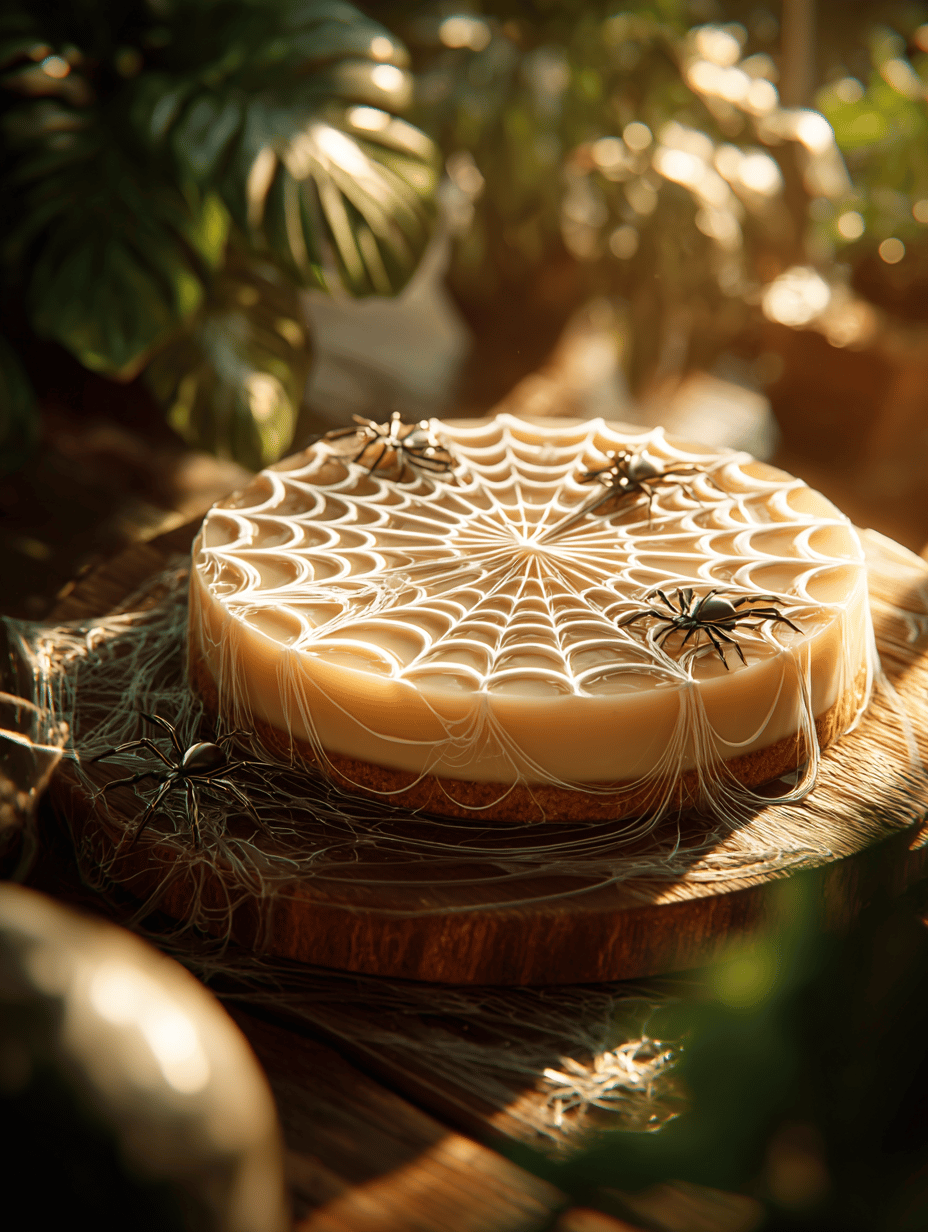
Spiderweb Cheesecake
Ingredients
Equipment
Method
- Preheat your oven to 160°C (320°F). In a bowl, combine graham cracker crumbs with melted butter and press the mixture evenly into the bottom of a springform pan. Chill in the refrigerator for 15 minutes to set the crust.
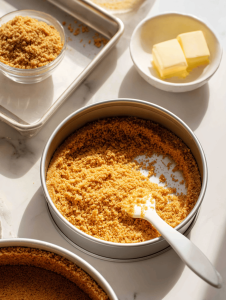
- In a large mixing bowl, beat the softened cream cheese with granulated sugar until smooth and creamy. This should take about 2-3 minutes and will fill your kitchen with a pleasant, tangy aroma.
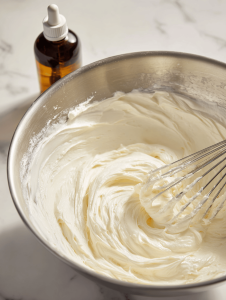
- Add eggs one at a time to the cream cheese mixture, beating well after each addition to incorporate fully. The mixture should become silky and slightly thickened.
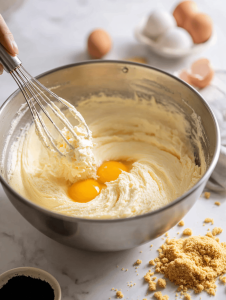
- Stir in sour cream and vanilla extract until combined and the mixture is smooth and uniform. The filling will be creamy and slightly tangy.
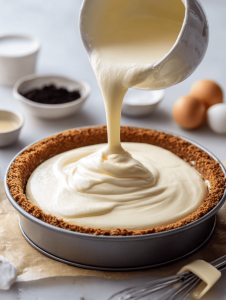
- Pour the filling over the chilled crust, smoothing the top with an offset spatula. Tap the pan gently on the counter to remove air bubbles, then bake for 50-55 minutes until the edges are set but the center still has a slight jiggle.
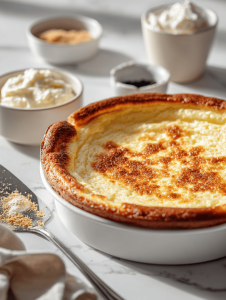
- Remove the cheesecake from the oven and let it cool in the pan for about 30 minutes. The center should still be slightly jiggly, which means it’s perfectly baked.
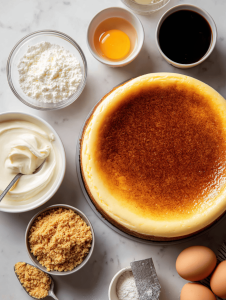
- Transfer the cheesecake to the refrigerator and chill for at least 4 hours or overnight. This step helps the texture set and makes decorating easier.
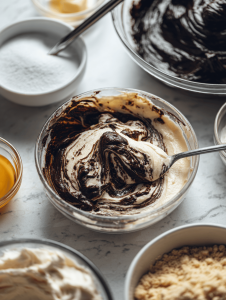
- Once chilled, prepare the web pattern by mixing sour cream with powdered sugar until smooth. Pour this mixture into a piping bag or zip-top bag with a small corner cut off.
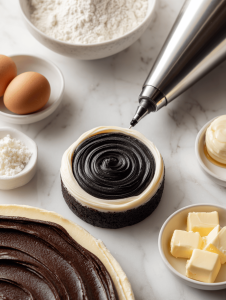
- Use the piping bag to draw a concentric circle on top of the cheesecake, then use a toothpick or skewer to drag lines from the center to the edge, creating a web-like pattern.
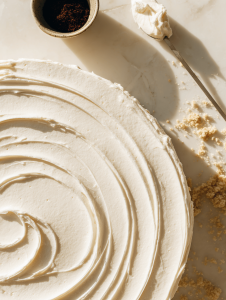
- Sprinkle the powdered sugar lightly over the web pattern for a finished, spooky look. Chill briefly if needed to help the web set firmly.
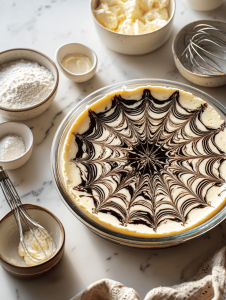
- Slice and serve your stunning spiderweb cheesecake, marveling at the rich, tangy layers and the intricate web design. Enjoy this deliciously spooky dessert!
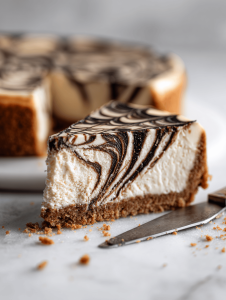
Leave a Reply